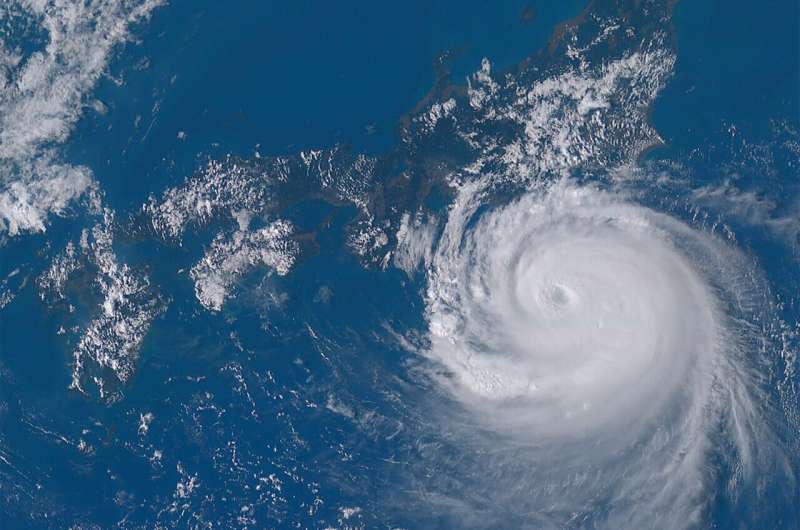This article has been reviewed according to Science X's editorial process and policies. Editors have highlighted the following attributes while ensuring the content's credibility:
fact-checked
peer-reviewed publication
trusted source
proofread
Rider on the storm: Shearwater seabird catches an 11-hour ride over 1,000 kilometers in a typhoon

New research from Japan published in Ecology suggests that increasingly severe weather driven by climate change may push oceangoing seabirds to their limits.
In August 2019, Kozue Shiomi, a seabird biologist at Tohoku University, attached GPS bio-loggers to 14 adult streaked shearwaters (Calonectris leucomelas) from a nesting colony on Mikurajima, a small island near Tokyo, as part of a study on the species homing behavior.
In September of that same year, an exceptionally powerful storm, Typhoon Faxai, barreled into southeastern Japan, causing considerable physical damage to the mainland. But the typhoon, with wind speeds nearing 200 km/hr, also provided scientists with a rare glimpse into the capacity of seabirds to withstand extreme storm conditions—conditions that seabirds may increasingly be faced with under future climates.
Analysis of tracking data following the passage of Typhoon Faxai revealed that while most of the tagged shearwaters appeared to be either unaffected by or had managed to circumvent the storm, one male had not been so lucky. Over the 11-hour period during which this shearwater bird was tracked, it completed five full circular loops of 50–80 km diameter each and was transported a total distance of 1,146 km.
Under normal conditions, streaked shearwaters typically fly at speeds of 10–60 km/hr and altitudes below 100 m, and remain at sea; by contrast, tracking data indicated that the bird caught in the storm had attained speeds of 90–170 km/hr, soared to an altitude of 4700 m, and was carried over mainland Japan before the typhoon swung back into the Pacific Ocean.
Although it cannot be known for certain, it is possible that the shearwater was capable of escaping from the typhoon but instead chose to ride it out until the storm moved back over the ocean. Like most birds adapted to a life at sea, streaked shearwaters typically fly at very low altitudes, an efficient flight strategy over the open ocean that also puts them at higher risk of collisions with buildings, power lines and vehicles when over land. Moreover, they are clumsy on solid ground, and if forced to land, have difficulty taking off, rendering them highly vulnerable to predation.
Pelagic birds resort to a wide range of tactics to avoid being caught within the tumult of large storms. Red-footed boobies and great frigatebirds, for instance, often take to the wing and ascend to high altitudes, allowing storms to pass below, whereas Eastern brown pelicans simply sit them out, remaining grounded until conditions improve. Still others elect to stay within the eye of the storm, where winds are calmer.
But as warmer air and surface-water temperatures intensify storms throughout the world's ocean basins, questions are being raised about the ability of oceangoing birds to endure powerful storms that are projected to be a common occurrence. As Shiomi notes, improving understanding of how oceangoing birds cope with extreme weather will provide essential insight into the response—and resilience—of seabirds to the increasingly adverse environmental conditions expected under future climates.
More information: Kozue Shiomi, Swirling flight of a seabird caught in a huge typhoon high over mainland Japan, Ecology (2023). DOI: 10.1002/ecy.4161
Journal information: Ecology
Provided by Ecological Society of America




















